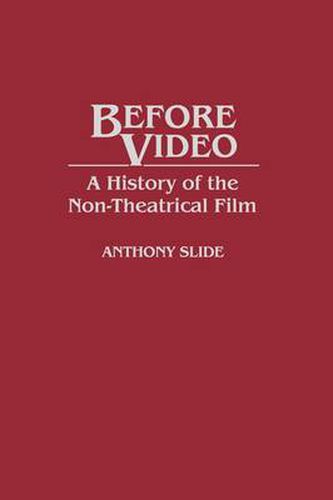Readings Newsletter
Become a Readings Member to make your shopping experience even easier.
Sign in or sign up for free!
You’re not far away from qualifying for FREE standard shipping within Australia
You’ve qualified for FREE standard shipping within Australia
The cart is loading…






The video revolution in the 1980s affected all areas of the American entertainment industry; its impact was most dramatic - ultimately devastating - to the non-theatrical film field. Non-theatrical film is the term used to describe motion pictures which are not shown in movie theatres, but are produced and/or distributed to markets that include the educational community, home and business and industry. The author covers the early Hollywood-produced features and short subjects in a format other than 35mm for homes, hospitals and correctional institutions, as well as industrial films. This is also the history of two major non-theatrical libraries, Bell and Howell and Kodascope, both of which were founded to service the needs of purchasers of the then newly-introduced 16mm projectors. The book documents how the advent of the 16mm projector made possible the introduction of audio-visual aids in classrooms and offices. A number of production companies were established, primarily in Chicago, to produce films for this new outlet. In addition, Hollywood saw a new market and began licensing distribution of the films. Complete with appendices providing distributors from the 1920s-1940s and current names and addresses of non-theatrical film sources, this is a book-length study of the history of this film genre.
$9.00 standard shipping within Australia
FREE standard shipping within Australia for orders over $100.00
Express & International shipping calculated at checkout
The video revolution in the 1980s affected all areas of the American entertainment industry; its impact was most dramatic - ultimately devastating - to the non-theatrical film field. Non-theatrical film is the term used to describe motion pictures which are not shown in movie theatres, but are produced and/or distributed to markets that include the educational community, home and business and industry. The author covers the early Hollywood-produced features and short subjects in a format other than 35mm for homes, hospitals and correctional institutions, as well as industrial films. This is also the history of two major non-theatrical libraries, Bell and Howell and Kodascope, both of which were founded to service the needs of purchasers of the then newly-introduced 16mm projectors. The book documents how the advent of the 16mm projector made possible the introduction of audio-visual aids in classrooms and offices. A number of production companies were established, primarily in Chicago, to produce films for this new outlet. In addition, Hollywood saw a new market and began licensing distribution of the films. Complete with appendices providing distributors from the 1920s-1940s and current names and addresses of non-theatrical film sources, this is a book-length study of the history of this film genre.